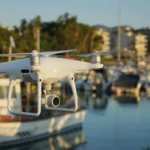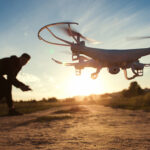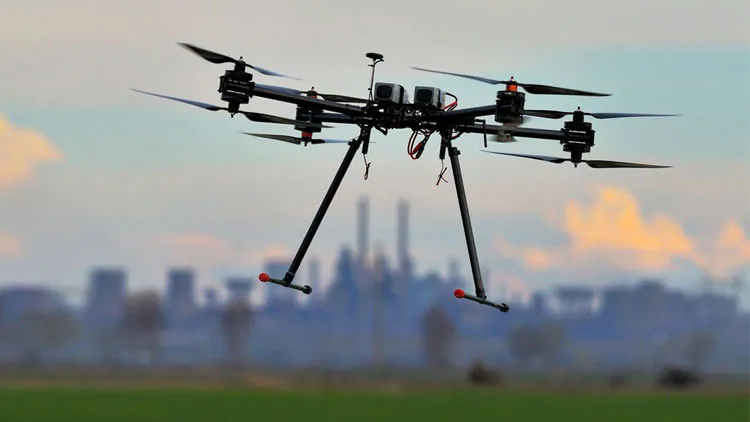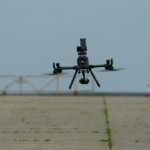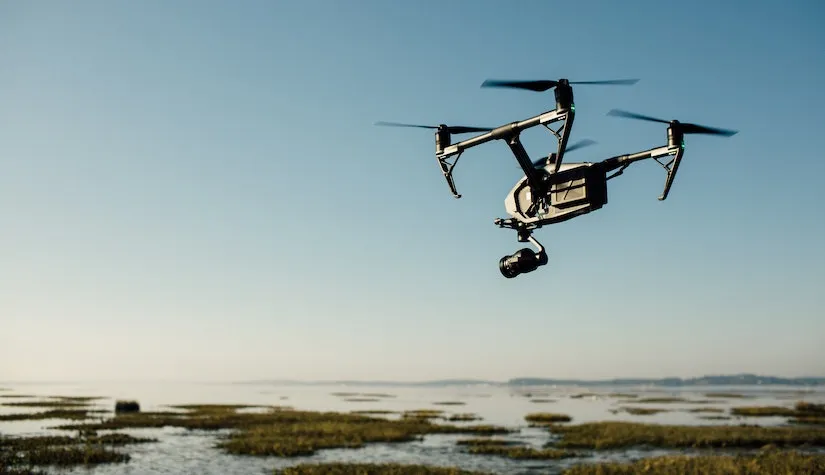
Drone cinematography has emerged as a groundbreaking tool in the world of filmmaking, opening up new dimensions of creativity and visual storytelling.
Drones equipped with high-quality cameras have revolutionized how filmmakers capture dynamic and awe-inspiring shots, previously reserved for big-budget productions.
In this article, we will dive into the art and craft of drone cinematography, offering insights, techniques, and tips to help filmmakers unlock the full potential of aerial cinematography.
Select the Right Drone and Camera
The foundation of successful drone cinematography begins with choosing the right equipment.
Invest in a drone with a stabilized gimbal and a camera capable of shooting in high resolutions like 4K or higher.
The quality of the camera and its stability in flight are paramount for achieving professional cinematic shots.
Master Drone Flight Skills
Before taking to the skies for cinematic storytelling, it’s crucial to master the art of drone piloting.
Spend ample time practicing flight maneuvers, familiarize yourself with your drone’s controls, and ensure you can execute precise and smooth flights.
Proficiency in flight skills is essential for capturing stable and visually striking shots.
Plan Your Shots and Storyboard
Just like any film production, meticulous planning is key. Outline your shots in advance and create a storyboard that maps out your cinematic vision.
Think critically about how each aerial shot contributes to the narrative or visual storytelling of your project.
A well-structured plan saves time and ensures that you capture the essential shots you need.
Compose Cinematic Shots
Aerial composition is an art form that can make a significant difference in the quality of your cinematography.
Utilize principles like the rule of thirds, leading lines, and framing to compose your aerial shots effectively.
Consider the elements within your frame, including foreground objects, landscapes, and subjects, to create depth and visual interest.
Utilize ND Filters
Neutral density (ND) filters are indispensable tools in drone cinematography. These filters reduce the amount of light entering the camera, enabling you to maintain the correct shutter speed for achieving cinematic motion blur. ND filters are especially beneficial when shooting in bright daylight conditions.
Experiment with Flight Modes
Modern drones offer a range of flight modes that expand your creative options. Experiment with modes like follow mode, orbit mode, and waypoint mode to capture dynamic and visually engaging shots.
For example, follow mode allows for seamless tracking of moving subjects, while orbit mode creates elegant circular shots.
Consider Lighting and Weather
Weather conditions and lighting greatly impact your drone cinematography. The golden hours, shortly after sunrise and before sunset, provide ideal natural lighting for stunning visuals.
Stay updated on weather forecasts and avoid flying in adverse conditions. Optimal lighting conditions can elevate the overall quality of your footage.
Incorporate Camera Movements
Drone cinematography allows for creative camera movements that add cinematic flair to your videos.
Experiment with controlled pans, tilts, and tracking shots to create dynamic and visually engaging sequences.
Smooth and deliberate camera movements can convey emotions and enhance storytelling.
Edit and Enhance
Post-production is where your drone cinematography truly comes to life. Utilize professional video editing software to edit and enhance your footage.
Adjust color grading, contrast, and exposure to achieve the desired cinematic look. Add music, sound effects, and voiceovers to enhance the overall storytelling experience.
Prioritize Safety and Regulations
Safety and adherence to regulations are paramount in drone cinematography. Familiarize yourself with local drone laws and regulations, respect no-fly zones, and prioritize safety during flights. Responsible piloting ensures the safety of your crew, equipment, and the public.
Conclusion
Drone cinematography has democratized the art of capturing breathtaking visuals from the sky.
By selecting the right equipment, mastering flight skills, careful planning, and creative techniques, filmmakers can unlock the full potential of aerial cinematography.
Always prioritize safety and comply with regulations to ensure responsible and ethical drone piloting.
With dedication and creativity, your drone cinematography projects can soar to new heights, captivating and inspiring audiences like never before.
So, take flight and let your creativity soar in the world of drone cinematography.

